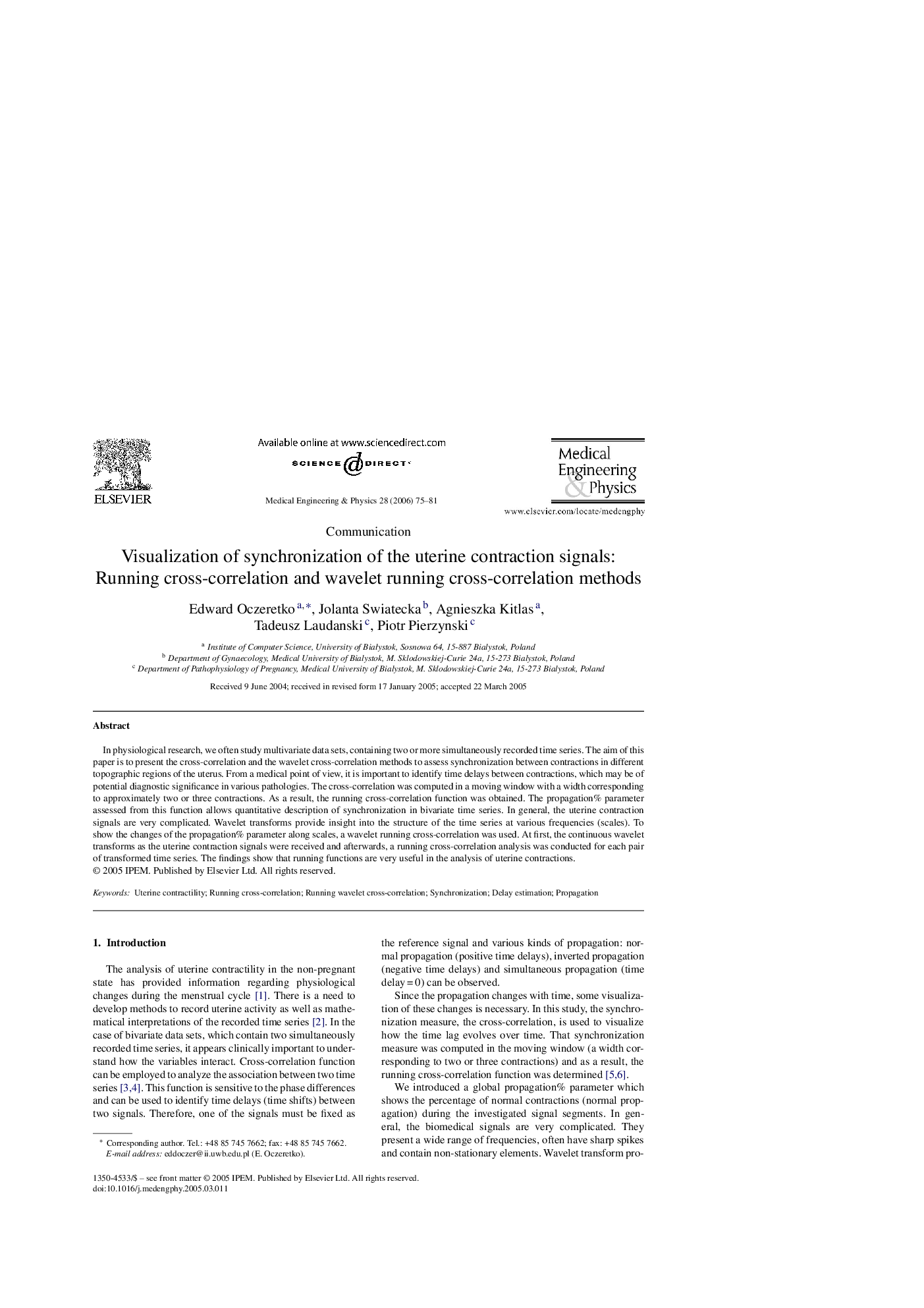| Article ID | Journal | Published Year | Pages | File Type |
|---|---|---|---|---|
| 877272 | Medical Engineering & Physics | 2006 | 7 Pages |
In physiological research, we often study multivariate data sets, containing two or more simultaneously recorded time series. The aim of this paper is to present the cross-correlation and the wavelet cross-correlation methods to assess synchronization between contractions in different topographic regions of the uterus. From a medical point of view, it is important to identify time delays between contractions, which may be of potential diagnostic significance in various pathologies. The cross-correlation was computed in a moving window with a width corresponding to approximately two or three contractions. As a result, the running cross-correlation function was obtained. The propagation% parameter assessed from this function allows quantitative description of synchronization in bivariate time series. In general, the uterine contraction signals are very complicated. Wavelet transforms provide insight into the structure of the time series at various frequencies (scales). To show the changes of the propagation% parameter along scales, a wavelet running cross-correlation was used. At first, the continuous wavelet transforms as the uterine contraction signals were received and afterwards, a running cross-correlation analysis was conducted for each pair of transformed time series. The findings show that running functions are very useful in the analysis of uterine contractions.
